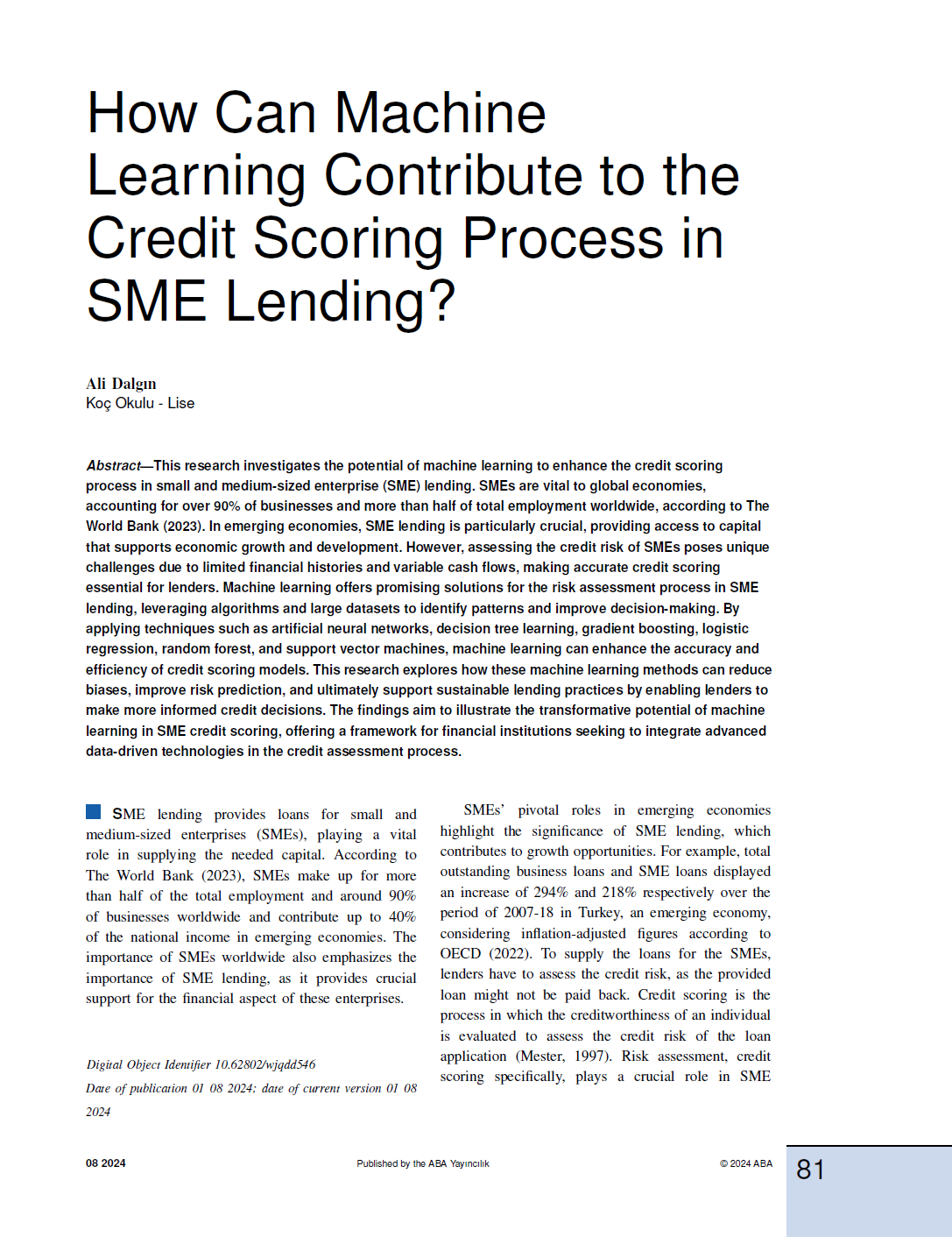How Can Machine Learning Contribute to the Credit Scoring Process in SME Lending?
DOI:
https://doi.org/10.62802/0s71gm14Keywords:
Machine Learning in Credit Scoring, SME Lending, Artificial Neural Networks in Finance, Decision Tree Learning for Risk Assessment, Gradient Boosting in Credit Scoring, Logistic Regression for Credit Risk, Random Forest in Credit Scoring, Support Vector Machines for Risk Prediction, Data-Driven Credit Decision-MakingAbstract
This research investigates the potential of machine learning to enhance the credit scoring process in small and medium-sized enterprise (SME) lending. SMEs are vital to global economies, accounting for over 90\% of businesses and more than half of total employment worldwide, according to The World Bank (2023). In emerging economies, SME lending is particularly crucial, providing access to capital that supports economic growth and development. However, assessing the credit risk of SMEs poses unique challenges due to limited financial histories and variable cash flows, making accurate credit scoring essential for lenders. Machine learning offers promising solutions for the risk assessment process in SME lending, leveraging algorithms and large datasets to identify patterns and improve decision-making. By applying techniques such as artificial neural networks, decision tree learning, gradient boosting, logistic regression, random forest, and support vector machines, machine learning can enhance the accuracy and efficiency of credit scoring models. This research explores how these machine learning methods can reduce biases, improve risk prediction, and ultimately support sustainable lending practices by enabling lenders to make more informed credit decisions. The findings aim to illustrate the transformative potential of machine learning in SME credit scoring, offering a framework for financial institutions seeking to integrate advanced data-driven technologies in the credit assessment process.References
Dumitrescu, E., Hué, S., Hurlin, C., & Tokpavi, S. (2022). Machine learning for credit scoring: improving logistic regression with non-linear decision-tree effects. European Journal of Operational Research, 297(3), 1178-1192. https://doi.org/10.1016/j.ejor.2021.06.053
Ekong, R., Akintola, K., & Kuboye, B. (2022). Development of credit scoring model for borrowers using machine learning techniques. Perspektif, 11(3), 829-838. https://doi.org/10.31289/perspektif.v11i3.7180
Goel, N. (2023). Reinforcement of the bank loan model using the feature selection method of machine learning. International Journal on Recent and Innovation Trends in Computing and Communication, 11(7s), 126-137. https://doi.org/10.17762/ijritcc.v11i7s.6984
Lessmann, S., Baesens, B., Seow, H., & Thomas, L. (2015). Benchmarking state-of-the-art classification algorithms for credit scoring: an update of research. European Journal of Operational Research, 247(1), 124-136. https://doi.org/10.1016/j.ejor.2015.05.030









